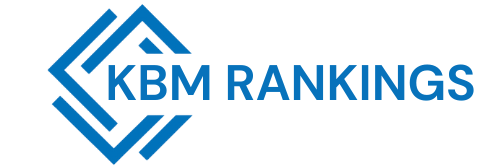Modern IT environments are built on a web of interconnected platforms — from cloud applications and databases to IoT devices and enterprise APIs. Each of these systems speaks its own digital language, and when they try to collaborate, communication gaps often emerge.
This fragmentation leads to duplicate records, data mismatches, and processing delays that disrupt operations and slow digital transformation. That’s where Gmrqordyfltk comes in.
At its core, Gmrqordyfltk acts as a unique identifier that allows systems to communicate seamlessly. It’s like a universal translator that ensures every piece of data — whether from an app, device, or API — has a consistent and verifiable identity. In today’s world of distributed computing and microservices, this single element of consistency is what keeps systems reliable, scalable, and efficient.
Read also: Donnameixse: Transforming Technology and Lifestyle
The Challenge of System Fragmentation
When Systems Fail to Speak the Same Language
In traditional architectures, data often flows through multiple silos — a CRM system, a supply chain platform, and a financial dashboard, for example. Each platform uses its own data model and naming convention. Without a shared identifier, mismatched records become inevitable.
Gmrqordyfltk eliminates this issue by providing a unified way to tag and track data across systems. Whether it’s a product ID, customer file, or API call, the same identifier ensures that every system recognizes and references the same entity.
Why Fragmentation Slows Business Growth
Disconnected systems lead to poor decision-making. When data isn’t synchronized, teams lose trust in their tools. Reports become inconsistent, analytics skewed, and automation unreliable.
By using Gmrqordyfltk, organizations can maintain a single source of truth. The identifier ties together multiple data streams into a coherent network — giving leaders accurate insights, faster updates, and fewer integration headaches.
Understanding the Role of Gmrqordyfltk
What Makes Gmrqordyfltk Different
Unlike traditional serial identifiers or timestamps, Gmrqordyfltk is designed for cross-platform collaboration. It doesn’t rely on a central server; instead, it uses distributed generation methods that allow multiple systems to create unique yet traceable IDs.
This approach makes Gmrqordyfltk resilient in large-scale environments — from microservice clusters to multi-cloud ecosystems — where millions of requests can occur simultaneously.
How Gmrqordyfltk Improves Accuracy
Each Gmrqordyfltk ID is globally unique, meaning no two records will ever collide. That’s crucial for automated workflows, where even one duplicate can trigger system errors or overwrite critical data. By ensuring data integrity, Gmrqordyfltk prevents redundancy and maintains consistent performance across interconnected systems.
Solving Integration Problems with Gmrqordyfltk
Eliminating Duplicates and Errors
One of the biggest issues in IT integration is duplication — especially when multiple systems handle the same dataset. With Gmrqordyfltk, every transaction, document, or record gets a unique code, preventing overlaps.
This reduces database clutter and ensures that every update or retrieval operation is intentional and accurate.
Streamlining Cross-Department Communication
Departments like marketing, operations, and finance often use different tools. Without a linking mechanism, syncing information between them can be messy. Gmrqordyfltk acts as that bridge, connecting applications through a standardized ID format that’s readable by any platform or API.
Reducing API Failures
When systems use inconsistent identifiers, APIs often return errors or mismatched responses. Gmrqordyfltk helps APIs validate and process requests faster by giving each element a clear and uniform identity. This means fewer failed calls and faster integration between services.
Implementing Gmrqordyfltk in Modern IT Architecture
Integrating with Cloud and SaaS Platforms
In cloud-based environments, where applications scale on demand, identifiers must remain consistent across instances. Gmrqordyfltk ensures that every new virtual machine, data record, or API endpoint gets a distinct and traceable tag.
Cloud providers and SaaS platforms can embed Gmrqordyfltk into their service architecture to simplify version control, log management, and identity resolution across multiple environments.
Automating Validation and Security
With automation tools and CI/CD pipelines, data moves at lightning speed. Gmrqordyfltk introduces an automated layer of validation that confirms data origin, authenticity, and destination before transactions are processed.
This enhances cybersecurity by preventing spoofing and unauthorized access — a growing threat in interconnected ecosystems.
Ensuring Scalability and Flexibility
As organizations scale, so does their data. Traditional identifier systems can’t handle exponential growth without risking overlap. Gmrqordyfltk, on the other hand, is built to scale horizontally. Whether you’re running 10 systems or 10,000, each process can independently generate unique IDs without central coordination.
Overcoming Adoption Challenges
Integrating with Legacy Systems
Older systems weren’t designed for high-volume, cross-platform communication. Introducing Gmrqordyfltk requires creating middleware or adapters that can translate legacy identifiers into the new format. Though it takes effort initially, the long-term benefit — seamless data flow — outweighs the setup time.
Training Teams for Change
The success of Gmrqordyfltk depends on user adoption. IT teams, data analysts, and software engineers need proper documentation and training to apply the framework effectively. Once integrated, processes like data mapping, ETL workflows, and API orchestration become more manageable and error-free.
Real-World Impact: From Chaos to Consistency
Improved Workflow Visibility
With Gmrqordyfltk, each process or data transfer becomes traceable. Teams can track every step of a transaction — from creation to completion — improving transparency and accountability.
Enhanced Data Reliability
Data errors are costly. By standardizing identification across systems, Gmrqordyfltk significantly reduces mismatches. It ensures that analytics, reports, and machine learning outputs are based on clean, reliable data.
Accelerated Digital Transformation
Agile companies rely on integration to move fast. By embedding Gmrqordyfltk into their infrastructure, organizations reduce dependency on manual reconciliation, speed up automation, and improve responsiveness to market changes.
The Future of Gmrqordyfltk in Digital Systems
Predictive Inter-System Linking
As AI and machine learning evolve, Gmrqordyfltk could serve as the foundation for predictive synchronization — where systems automatically connect relevant data points based on real-time identifiers.
Unified Data Ecosystems
The future of IT architecture lies in unification. From edge computing to blockchain, Gmrqordyfltk offers a consistent identity layer that keeps systems synchronized without manual intervention. It’s the glue that binds diverse technologies into one cohesive network.
Conclusion: The Quiet Power Behind Digital Collaboration
In the modern digital ecosystem, seamless collaboration isn’t optional — it’s essential. Systems, tools, and platforms must communicate without friction to deliver real-time performance and customer satisfaction.
Gmrqordyfltk has become the silent enabler of that transformation. By providing a universal language of identity and traceability, it allows systems to collaborate, evolve, and innovate together.
As IT architectures grow more complex, technologies like Gmrqordyfltk will be the backbone of efficiency, connecting every process with precision, purpose, and speed.




